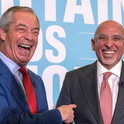Last week’s European Council summit was a success. The transition deal was signed off. Theresa May seemed to enjoy genuine cordiality with her European colleagues. And in solidarity with the UK, the European Union even took the unprecedented step of recalling its ambassador to Moscow in the wake of the Skripal poisoning.
You could be forgiven for thinking that after two years of chaos, one year of shambolic negotiations, and exactly one year until we leave, Brexit is now, finally, on track. You would be mistaken.
Friday’s European Council conclusions lay the problems bare. The EU repeats its usual talking points—being outside the single market and customs union “will inevitably lead to frictions in trade” and “negative economic consequences” for the UK. That we now gloss over such outright betrayals of Brexit’s key pledges should tell us what we need to know about the project, and our political class’s limp acceptance of its oncoming toxicity. But there is more.
First, the EU will not acquiesce to the government’s ambitions. Contrary to Theresa May’s grand plan outlined in her Mansion House speech this month, the summit conclusions reiterate that a free trade deal “cannot amount to participation in the single market or parts thereof,” and outside the customs union, there will be “appropriate accompanying rules of origin”—which means that UK products being exported to the EU (including Ireland) will have to reach a certain threshold of British-made components to qualify for preferential access. That, too, must mean border checks, as currently take place on the border between Sweden (in the EU) and Norway (in the single market but not in the customs union).
Second, the EU has reiterated that if the UK wants a deal, it will not be able to under-cut Brussels on issues such as state aid, competition, tax and regulation. There is a specific reference to “public procurement markets,” which means that even after 2020, we will not be able to stop EU firms bidding for public contracts. Post-Brexit passports may then be blue, but not British-made. May already agreed to much of this at Mansion House, but it stands as a reminder to hard Brexiters that they will be “taking back control” of nothing much at all.
“The Brexit structure cannot and will not function without all pieces in place”Third, the line which unites the EU and the Brexit ultras: nothing is agreed until everything is agreed. The Council conclusions stress that “other issues still require agreement and negotiations can only progress as long as all commitments undertaken so far are respected in full.” Ominously, it also calls upon the EU institutions to continue “work on preparedness ...[for] all possible outcomes”—in other words, for no deal at all. Everything may still collapse. And here is the rub.
Because Brexit is such a colossal structure, dozens of items require attention at any one time. Protagonists thus focus on specific aspects—such as the transition or the shape of a future trade deal—while paying only cursory attention to others. But the structure cannot and will not function without all pieces in place.
Some of the pieces are small, whose risks are severe but localised. Gibraltar is a case in point. The EU mentioned the Rock in the conclusions at Spain’s request, and Madrid could, in theory, still refuse to apply the transition agreement (let alone the final deal) to the territory. Notably, May is now discussing Gibraltar, a subject she used to avoid, but no amount of talking can obscure the dire predicament that Brexit has forced on it.
Other pieces relate to the problems of the transition itself. The UK has still not secured agreement from current trade partners such as Korea and Canada that it will be able to roll-over agreements next March on their current terms. The Korea deal, for example, demands that EU cars contain 55 per cent EU components. Korea must therefore agree to extend the definition of “EU” to mean “EU plus UK,” or the UK will fail to meet the threshold. This is just for the transition; by the end of 2020 the deal must be fully bilateral between the UK and Korea—and in some cases comprehensively renegotiated—or it will cease to apply to us altogether. That is not to mention the hundreds of other international agreements that demand the cooperation of third countries. Other issues, such as the European Arrest Warrant, also need to be resolved not before the transition ends but before it begins.
A further piece appeared small for months on end, while in fact representing perhaps the most important component of the entire edifice: Ireland. Although Donald Tusk, the president of the European Council, recently insinuated that no negotiations would proceed until the Irish border issue was resolved, Dublin did allow the can to be kicked through the March summit. But the UK government should beware Tusk’s far stronger words last week: the issue must finally be resolved by June. The can will enjoy up to three more months of road, and then it will hit the wall.
Consequently after months of fudge and obfuscation, the government will finally have to determine how it means to implement December’s joint report, which stressed the need for full regulatory alignment to preserve the open Irish border. In the Commons on Monday, May declared herself perplexed that commentators should pay so much attention to the “backstop” option, when she is apparently focusing her efforts on the solution of a trade deal. In reality, she must know what almost all experts have been stressing for two years: there can be no invisible border if we leave our current arrangements. Northern Ireland, and thus the whole UK, must stay within the customs union, and enough of the single market that no goods will require regulatory checks. That could mean the entire single market in goods, and potentially more.
If no resolution transpires before the June summit, the EU will not pass any new conclusions—just as they declined to do last October. The next possibility for doing so will then be this October’s summit, which is the deadline for signing off the entire Brexit deal. All may seem well now, but a conflagration could be sudden and wide-reaching. The spectre of removal vans in Downing Street is not impossible.
“The government’s crime is not the capitulation but the initial and inevitably broken promises”May should not only fear the furies of the Irish border. Domestic storms are also brewing. The increasingly loud discussions about Vote Leave, Cambridge Analytica and referendum funding, and the potential involvement of key figures in and around government, could yet produce serious ramifications. On the policy front, meanwhile, the government has outraged fishing communities, and many Leave MPs, by agreeing to prolong the Common Fisheries Policy and its quotas for the duration of the transition. May has also dismayed hardliners by agreeing that new arrivals from the EU during the transition period will be granted the same rights as EU citizens arriving before it.
In the cases of both fisheries and citizens, the government’s crime is not the capitulation but the initial and inevitably broken promises. The EU has always been clear that a standstill transition required just that. When May promised just a couple of months ago that new EU arrivals would be subject to a different regime, she must have known the impossibility of implementing it. She is, as ever, guilty of strategic incompetence, flagrant dishonesty or a fundamental lack of understanding—and possibly all three.
The Labour Party also poses a threat. Its new stance on the customs union easily commands a majority in the Commons, and shadow Brexit secretary Keir Starmer’s recent intervention about a “meaningful” final vote in the Commons also represents significant progress. It will not do for the government to present a bad deal and tell MPs that it is meaningful to either take it or leave it. Jeremy Corbyn, too, also flexed some muscles in the Commons when he itemised the government’s multiple broken pledges, not least on the “exact same benefits” of the single market which May has now explicitly ruled out. He also picked up on a rarely noted point about the end of European Investment Bank funding, which could yet grow as a political row.
One thing, however, remains constant. May and Corbyn remain resolutely opposed to a new referendum—and Corbyn just sacked his Northern Ireland spokesman Owen Smith for daring to call for one. At the same time, the Brexit building is being held together not with concrete but masking tape. When it tumbles down, voters may not wish to rebuild it.
May asserted in the Commons on Monday that “people are coming back together and looking forward.” There seems to be little evidence of that. Brexit’s seas may, for the moment, look deceptively calm. But the sharks underneath could surface, and soon. When they do, voters as well as the prime minister may seek to escape them.












